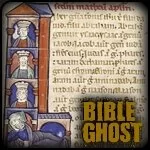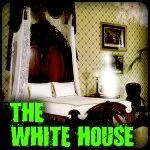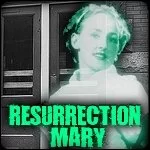Tales of ghosts, the wandering of hapless souls of those that have passed beyond the mortal coil, can be found among the folklore of many cultures and spanning thousands of years of history. From Biblical accounts, to tales of the pharaohs of Egypt, to ancient Greece, to Asian dynasties, to medieval Europe, to the New World and beyond, these stories have both frightened and captivated the imaginations of humankind. The topic of life beyond death has been fertile ground for authors, poets, and storytellers, as the afterlife is the only frontier that, once explored, seems never to be fully revealed to the living. Read some of the more notable history of ghosts, and especially, ghost sightings.
 History of Ghosts: The Ghost of Samuel
History of Ghosts: The Ghost of Samuel
Perhaps the earliest recorded ghostly encounter can be found in the Bible’s Old Testament, specifically 1 Samuel 28:3-25. In the account (written approximately 930 B.C.), Israel’s King Saul finds his nation on the verge of war with the Philistines. Saul is terrified and seeks God for guidance. However, God does not respond to Saul in visions, through the words of prophets or by any other means. Saul, therefore, seeks the help of a medium to conjure the spirit of Samuel the prophet, who had been dead and buried years before. Saul indeed finds his medium, the so-called “witch” of Endor, who subsequently succeeds in calling forth the spirit of Samuel. Samuel then informs Saul that God has torn the kingdom out of his hands, due to his disobedience, thus delivering the kingdom of Israel to David. Find more Ghosts in the Bible.
History of Ghosts: Pliny's Haunted House
Pliny the Younger, author, lawyer, and magistrate in Ancient Rome (61- ca. 112, A.D.) wrote of a more classically terrifying apparition in a letter to fellow Roman government official, Lucius Licinius Sura. The tale is among the first “haunted house” stories ever recorded. In the story, Pliny describes a house in which the apparition of an old man, emaciated, bearded, and burdened with heavy chains plagues the inhabitants therein. Those who bought or rented the house became so frightened that they evacuated the property. Finally, a philosopher, who was identified as Athendorus, takes up residence there. Familiar with tales of the ghost, Athendorus decides to immerse himself in his writing, in the hopes of distracting himself when the ghost appears. However, the sound of the rattling chains and moaning becomes so dreadfully loud and terrifying that Athendorus can take it no longer. He follows the ghost to a spot outside the house, whereupon the figure disappears. Athendorus marks the spot with grass and leaves and in the morning orders the spot to be dug up. The excavation produced the corpse of a man wrapped in heavy chains. Athendorus promptly ordered a proper burial for the man, and his ghost was never seen in the house again. Read Pliny's Haunted House.
 History of Ghosts: The Ghost of Anne Boleyn
History of Ghosts: The Ghost of Anne Boleyn
Medieval Europe has certainly had its share of ghostly sightings, as well. England’s 16th century king, Henry VIII, sought a male heir. Having no success with previous wives, Henry married Anne Boleyn. Sadly, however, she never bore him a son, only succeeding in miscarrying a male child. As the Church did not permit divorce, King Henry sought to trump up false charges against Anne, including adultery, so as to have her executed (thereby allowing Henry the opportunity to re-marry and have a male heir to the throne of England). Henry succeeded in setting up his his wife, Anne Boleyn, and she was beheaded at the Tower of London on May 19, 1536 and subsequently buried within the Tower of London in an arrow chest. Since that fateful day, Anne Boleyn has become perhaps the most famous ghost in perhaps the most haunted location in all of Europe, the Tower of London. It is said that, in 1817, a sentry at the Tower encountered Anne’s ghostly, headless apparition and promptly died of a heart attack. Later, in 1863, a guard at the Tower was court-martialed for having “fallen asleep on duty.” What had actually taken place, according to the guard, was that he had encountered the figure of a headless woman, wearing a “queer bonnet” steadily approaching, failing to heed his orders to halt. He then thrust his bayonet into the woman, which sent a fiery shock through him, causing him to lose consciousness. After witnesses corroborated the guard’s story, he was fully acquitted of all charges. A similar event occurred in 1933 when Anne’s headless figure walked into his bayonet, and he ran screaming into the guardsroom for help. Read about The Haunted Tower of London.
 History of Ghosts: The Haunted White House
History of Ghosts: The Haunted White House
As one might expect, sightings of ghosts have been reported in the United States of America. For example, it has been said that Sir Winston Churchill, Prime Minister of England during World War II, would not stay the night in the Lincoln Bedroom of the White House, upon seeing what he reported as the apparition of none other than Abraham Lincoln, himself. Learn more about Real Haunted Houses.
History of Ghosts: Chicago's Resurrection Mary
Another chilling tale comes from Chicago in the 1930’s, namely that of “Resurrection Mary.” As the story goes, young Mary went out dancing at the “Oh Henry Ballroom” with her young lover, but they subsequently got into an argument. Following the dispute, Mary leaves the ballroom to walk herself home, along Chicago’s Archer Avenue, whereupon she was struck and killed in a hit-and-run automobile accident. Mary was laid to rest in Chicago’s “Resurrection Cemetery” in her white dancing gown and shoes. One Chicago resident, Jerry Palus, described a chilling encounter in 1939, in which he picked up a young lady hitchhiking. She asked to be let out in front of Resurrection Cemetery, kissed the man, and disappeared without a trace. More recently, in the 1950’s workers involved in the renovation of a house built on the site of the execution of notorious criminial

James “Yankee Jim” Robinson (d. 1852) refused to continue working on the site after witnessing strange sights and sounds, such as doors and windows closing by themselves.
The Spirited Conclusion:
Human history is fraught with tales of disembodied spirits of the dead. One can only assume that ghost stories will continue to abound, until and unless the mysteries of the afterlife have been solved. And even then, it's our bet that legends of ghost sightings will continue to be added to the long history of ghosts.

